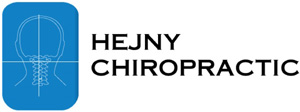 Every MN vertigo chiropractor knows that vertigo is a fairly common disorder that becomes increasingly more common with age. If you or someone you love has vertigo, you understand how debilitating and frustrating it can be. Many people with vertigo experience a sense of fear and uncertainty because they don’t know when another vertigo attack will happen.
Every MN vertigo chiropractor knows that vertigo is a fairly common disorder that becomes increasingly more common with age. If you or someone you love has vertigo, you understand how debilitating and frustrating it can be. Many people with vertigo experience a sense of fear and uncertainty because they don’t know when another vertigo attack will happen.
In this article, we’re going to cover vertigo in-depth to empower you with better knowledge. We will discuss the types of vertigo and associated causes, then provide some action steps for you to get started down the path to recovery.
I hope this article will help you realize that the positioning of the neck can contribute to this unpleasant disorder. On a positive note, vertigo has a solution, and everyone can have access to it.
Let’s dive in.
Table of Contents
Types of Conditions with Vertigo
Vertigo is actually a symptom of several disorders rather than a stand-alone disorder. By getting a full symptom picture, you will be able to determine the cause of your vertigo more accurately.
You and your doctor must spend time pointing out what the specific cause of your vertigo is so that you both can address it. The following disorders all have vertigo as a key symptom – in addition to several others.
To learn more about the connection between head and neck injuries and vertigo, download our complimentary e-book by clicking the image below.
Meniere’s Disease
About 615,000 Americans have Meniere’s disease, according to the American Hearing Research Foundation. This vestibular condition most commonly happens in one ear at a time and is easily identified by a triad of symptoms: vertigo, tinnitus (ringing in the ears), and loss of hearing.
Sometimes, people with Meniere’s disease may also experience a condition called endolymphatic hydrops, where the ear fills up with fluid. For these patients, fluid build-up can lead to vertigo. Under this assumption, the most common relief care for Meniere’s patients is reducing fluid through medication and diet.
However, endolymphatic hydrops is not always present with Meniere’s. Therefore, reducing fluid levels with diet and medications may not always be helpful. Successful care requires a more nuanced approach.
Vestibular Neuritis and Labyrinthitis
While these are certainly not the same disorder, they do share a common cause: inflammation. Additionally, both are more common after a viral illness. Vestibular neuritis occurs due to inflammation of the vestibular nerve. The vestibular nerve transmits signals from the ear to the brain. Patients with vestibular neuritis may experience vertigo with changing eye or head position. Vestibular neuritis is usually self-limited and resolves within several weeks.
Labyrinthitis refers to inflammation of the middle ear. In addition to vertigo, patients with labyrinthitis may also experience some hearing loss. Some cases of labyrinthitis may cause permanent damage if not properly treated.
Positional Vertigo
If the room starts spinning when you move your head into a certain position, then you may be suffering from positional vertigo. Positional vertigo is a not-so-cleverly-named description of a vertigo disorder related to — you guessed it — head position. In some patients, positional vertigo is related to tiny crystals in the inner ear canal. These crystals are supposed to move smoothly within their canals but can become stuck.
For patients with this underlying cause, there are specific maneuvers to dislodge the crystals and get them back to the appropriate canal. Unfortunately, not every case of positional vertigo can be traced back to crystals. In some situations, the underlying cause is never known. But don’t give up hope! In the next section, we will discuss another route that may help positional vertigo.
What You Can Do About Vertigo
From the previous section, you can see how important it is to determine the underlying cause of your vertigo. Identifying the cause helps to ensure that the approach you receive is targeted to your specific case of vertigo and leads to improved clinical outcomes.
While vertigo can be disabling, there is hope. Next, we will discuss a niche in the chiropractic profession that has helped hundreds of thousands of vertigo patients.
Upper Neck Misalignment – The Answer for Vertigo Sufferers?
Many case studies imply that an upper neck misalignment can contribute to vertigo. In these case studies, patients with vertigo achieved natural relief from their symptoms after a simple cervical adjustment. The numbers are quite encouraging: one study involving 300 patients had a whopping 97% success rate and an average 90% reduction in vertigo severity. In another study of 60 patients, vertigo resolved entirely in 80% of the patients, and 20% experienced a significant decrease in their vertigo.
Of course, a cervical misalignment, in addition to experiencing vertigo, was required for all the patients to participate in the case studies. These patients were suffering from a specific misalignment of the upper cervical spine. The upper cervical spine refers to the top two bones in the neck — C1 and C2. These two small bones are responsible for most of the range of motion in your neck. Unfortunately, enhanced mobility makes them vulnerable to misalignment.
Misalignment of C1 and C2 can lead to vertigo because blood vessels that supply vital blood flow to the brain pass through these vertebrae. The upper cervical bones also protect the brainstem and are near the eustachian tubes of the inner ear. A misaligned upper cervical spine can easily impinge on any of these structures.
Visit an MN Vertigo Chiropractor for a Solution
But don’t just take my word for it:
- Although most cases of positional vertigo are said to have no known cause, the high success rate of relief care with upper cervical chiropractic adjustment makes a compelling case for the cause being in the upper cervical spine.
- If the eustachian tubes are functioning properly, conditions that lead to inflammation and excess fluid in the inner ear are less common.
The case for upper cervical chiropractic adjustments as a natural approach for vertigo is quite strong especially if you have a history of neck or head injury. What’s more, upper cervical chiropractic adjustments are safe and gentle.
Set an appointment with Hejny Chiropractic in Spring Lake Park, Minnesota, and let a reliable MN vertigo chiropractor help you get rid of your vertigo attacks naturally.
To schedule a complimentary consultation with Dr. Hejny, call our Spring Lake Park office at 763-230-0116. You can also click the button below.
 If you are outside of the local area, you can find an Upper Cervical Doctor near you at www.uppercervicalawareness.com.
If you are outside of the local area, you can find an Upper Cervical Doctor near you at www.uppercervicalawareness.com.
